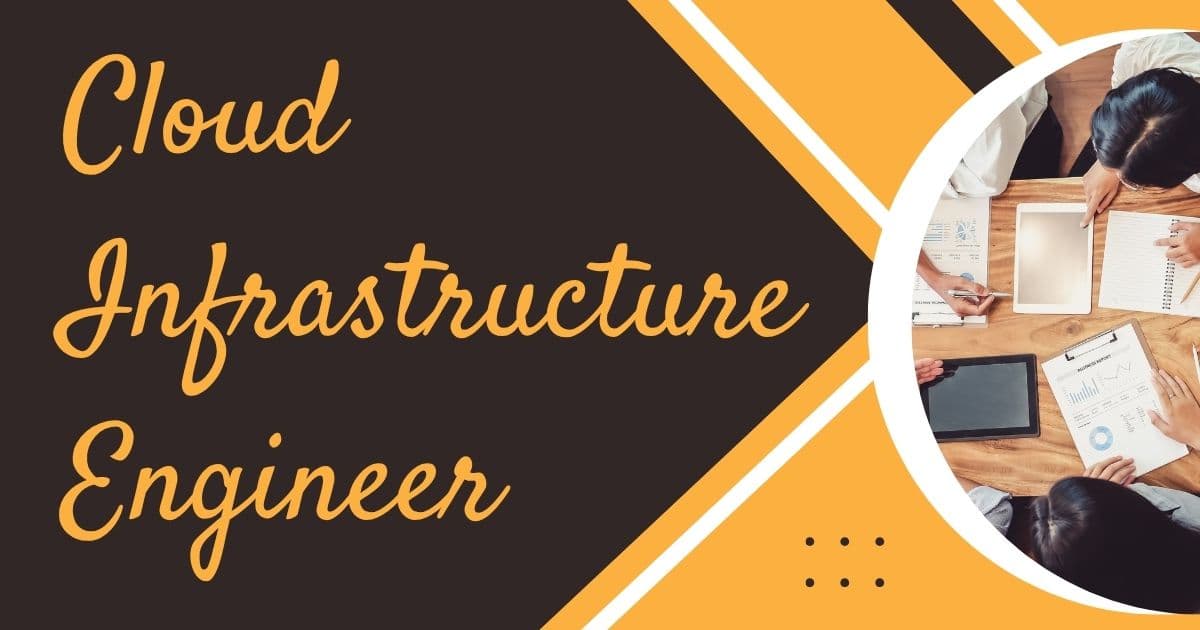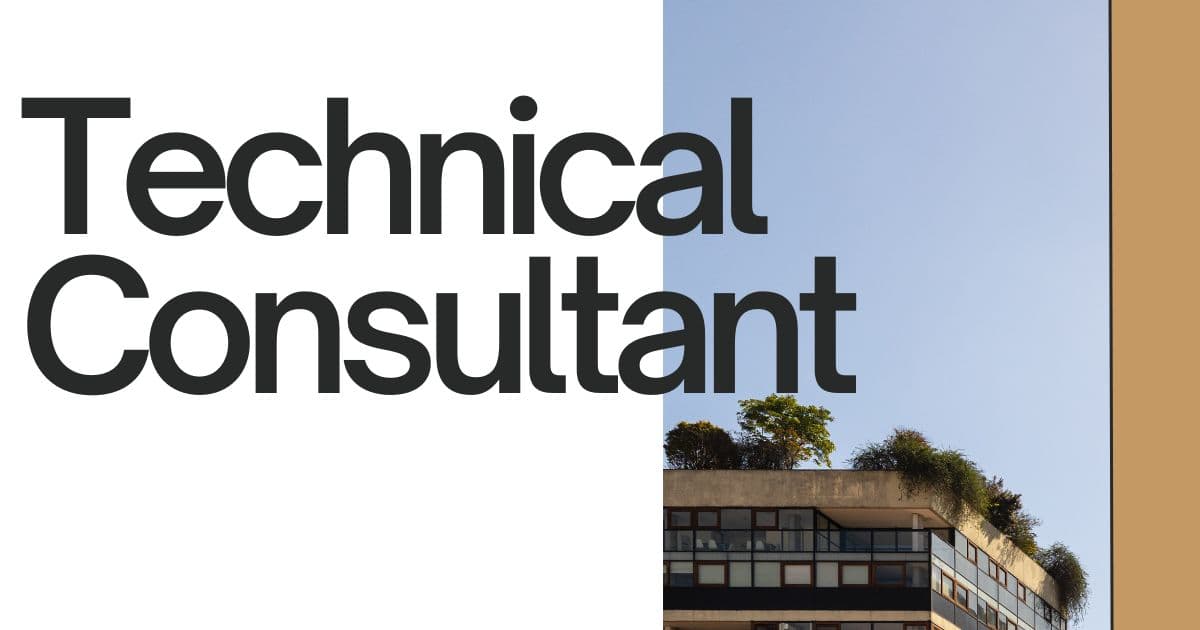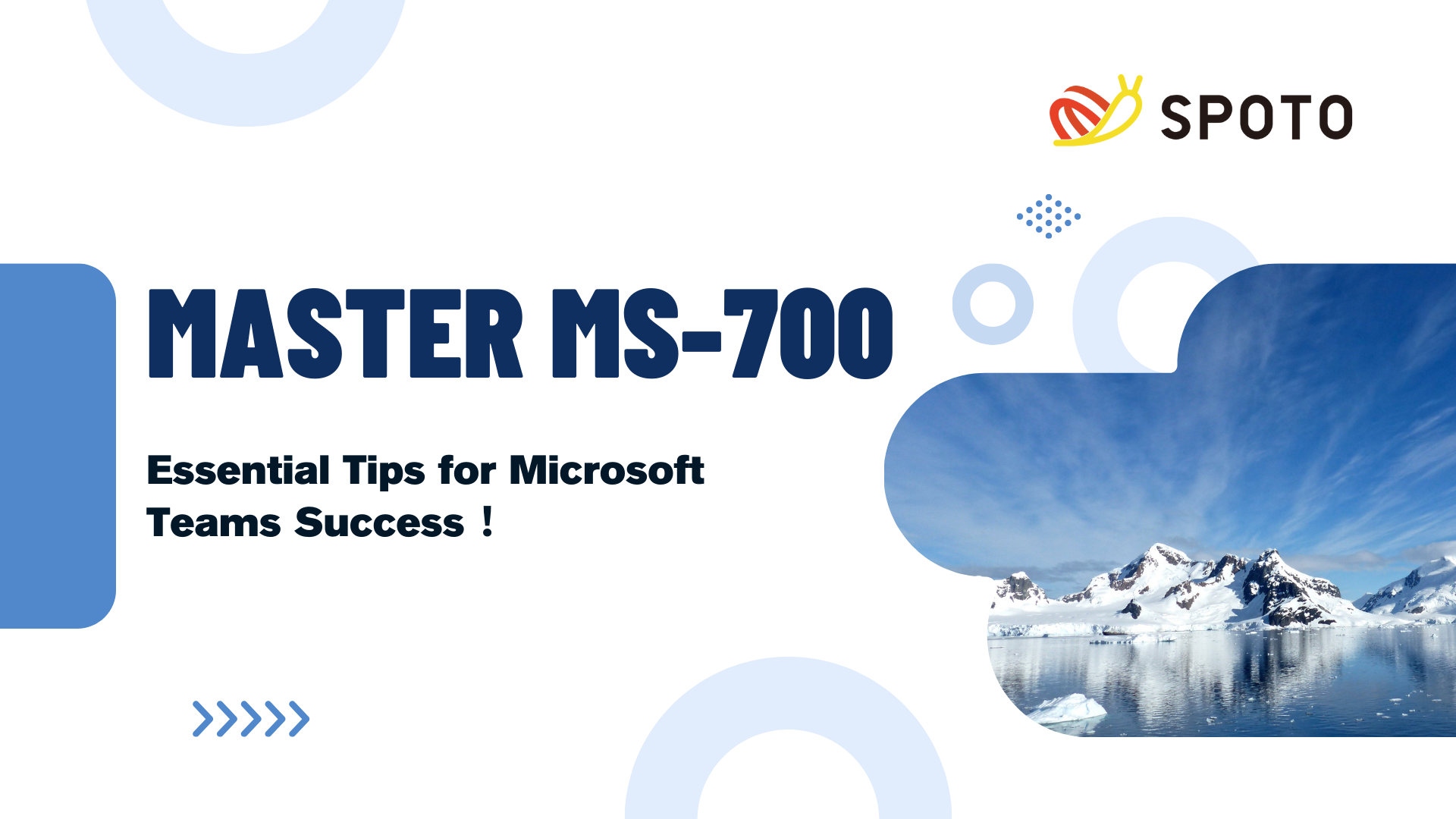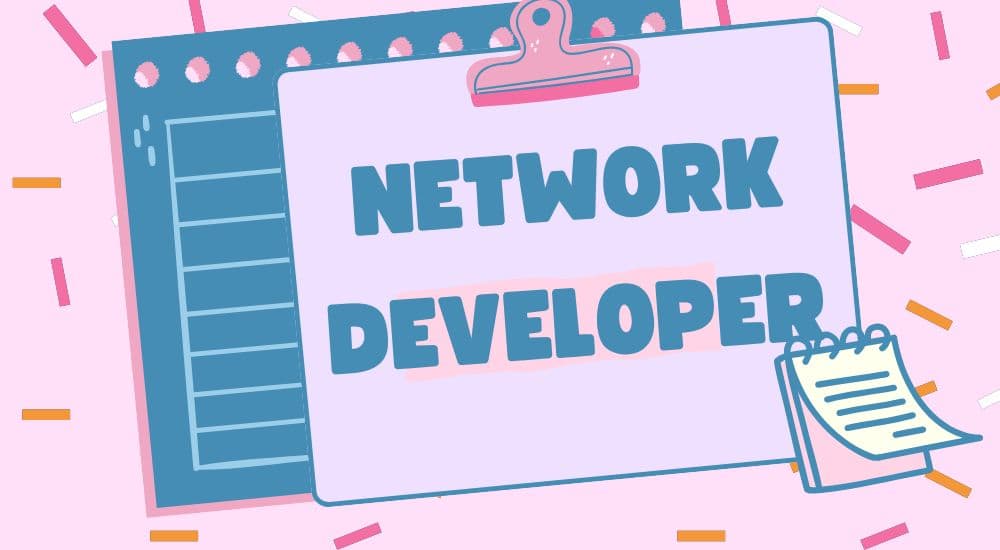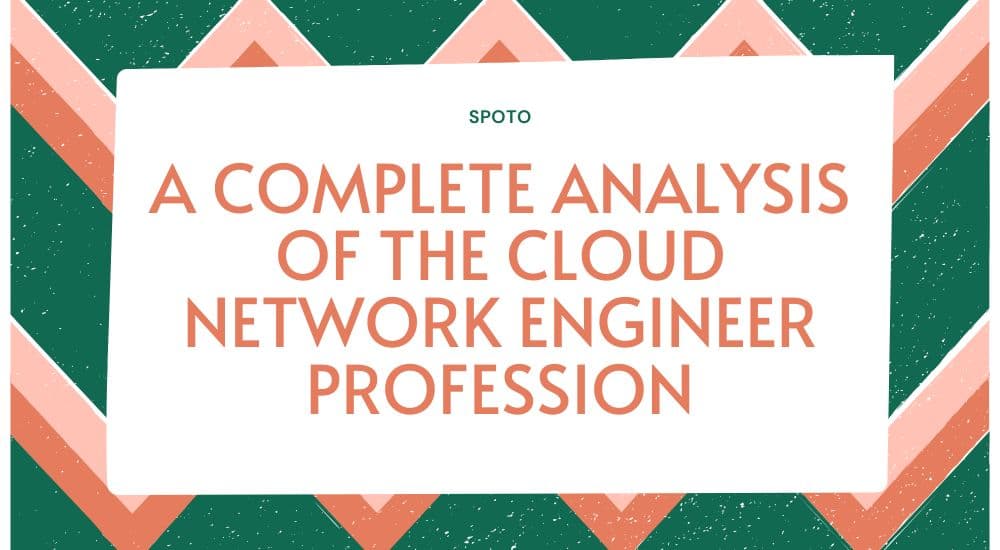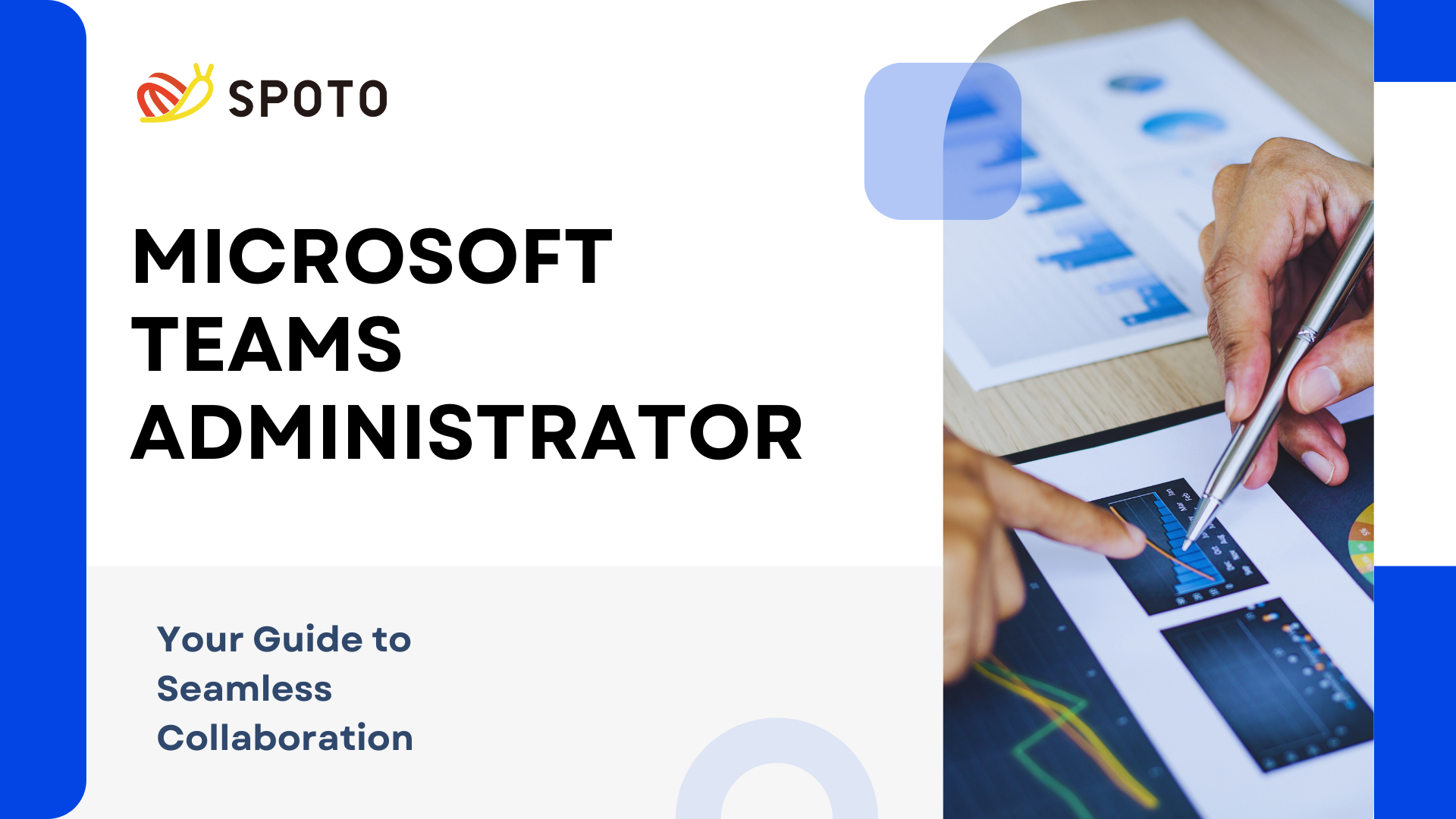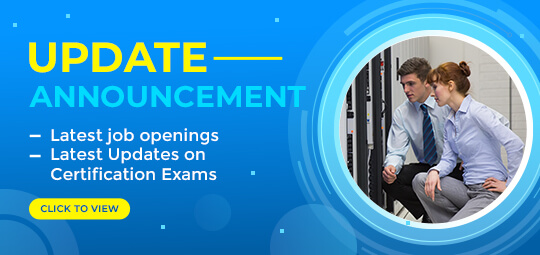TRUSTED BY THE SMARTEST TEAMS IN THE WORLD FOR CERTIFIED CANDIDATES
SPOTO Blogs
Useful learning materials to become certified IT personnel
-
- 1319
- Emma
- 2025-05-13 15:31
-
- 988
- SPOTO
- 2025-05-13 11:05
-
- 1032
- SPOTO
- 2025-05-13 10:38
-
- 967
- Emma
- 2025-05-12 16:44
-
- 1157
- Emma
- 2025-05-12 15:36
-
- 637
- SPOTO
- 2025-05-12 11:21
-
- 1137
- SPOTO
- 2025-05-12 10:40
-
- 999
- Emma
- 2025-05-09 12:09
-
- 778
- SPOTO
- 2025-05-09 11:39
TRUSTED BY THE SMARTEST TEAMS IN THE WORLD FOR CERTIFIED CANDIDATES
SPOTO Blogs
Useful learning materials to become certified IT personnel
-
- 1319
- Emma
- 2025-05-13 15:31
Table of Contents1. What is a cloud support engineer?2. What does a cloud support engineer do?3. Why become a cloud support engineer?4. How to Become a Cloud Support Engineer? In the ever-expanding digital universe, cloud computing has emerged as a dominant force. As more and more businesses migrate their operations to the cloud, the role of a cloud support engineer has become not just important, but essential. Let's explore what this role entails, why it's a great career choice, and how you can embark on this rewarding journey. 1. What is a cloud support engineer? A cloud support engineer is a professional who serves as the front-line troubleshooter and problem-solver for cloud-based services. They are the ones ensuring that cloud-computing environments run smoothly, efficiently, and securely for businesses of all sizes. Whether it's a small startup relying on cloud-hosted software or a large enterprise with a complex multi-cloud infrastructure, cloud support engineers are the key to maintaining seamless operations. Related Occupations: Cloud Administrator Cloud Architect Cloud Security Engineer DevOps Engineer (with a focus on cloud-related support and operations) 2. What does a cloud support engineer do? Monitoring and Incident Detection Cloud support engineers use specialized monitoring tools to keep a close eye on cloud-based systems. They watch for any signs of performance degradation, outages, or security threats. For example, they might notice unusual spikes in server resource usage or a sudden increase in error rates for a cloud-hosted application. Troubleshooting and Problem Resolution When problems do occur, cloud support engineers jump into action. They analyze error messages, system logs, and performance data to identify the root cause of the issue. Once they've pinpointed the problem, they implement solutions, whether it's adjusting a server configuration, updating software, or coordinating with other teams to resolve more complex issues. Customer Support and Communication They are often the main point of contact for customers experiencing issues with cloud services. Cloud support engineers need to communicate clearly and effectively with customers, both technical and non-technical. They explain complex technical problems in simple terms and keep customers informed about the progress of issue resolution. Collaboration with Cross-Functional Teams Cloud support engineers don't work in isolation. They collaborate closely with other teams such as development, operations, and security. In a situation where a new feature deployment in a cloud-based application causes performance issues, the cloud support engineer will work with the development team to identify the source of the problem and with the operations team to implement a fix while minimizing downtime. 3. Why become a cloud support engineer? Abundant Job Opportunities and Stable Employment Companies across industries are migrating to the cloud, creating a huge demand for cloud support engineers. This high demand means job security, as organizations are constantly on the lookout for skilled professionals to keep their cloud-based operations running smoothly. Challenging and Intellectually Rewarding Work Cloud computing is a dynamic field with new technologies and challenges emerging regularly. As a cloud support engineer, you'll be constantly learning and solving complex problems. For example, with the rise of serverless computing and edge computing in the cloud, you'll have the opportunity to explore and master these new technologies and find ways to support and optimize them. Each day brings a new set of issues to solve, keeping your mind engaged and your skills sharp. Making a Significant Impact in the Digital Realm Cloud support engineers play a vital role in ensuring the success of businesses in the digital age. By keeping cloud-based services up and running, they enable companies to focus on their core operations. Their work also contributes to the overall stability and security of the digital ecosystem. Diverse Career Progression Avenues The skills and experience gained as a cloud support engineer can open the door to a variety of related career paths. You can specialize in areas such as cloud security, where you focus on protecting cloud-based data and applications. Or you could move into a cloud architect role, where you design and plan complex cloud-based systems. There are also opportunities to work in different industries, allowing for a diverse and fulfilling career. 4. How to Become a Cloud Support Engineer? Obtain a Relevant Degree A bachelor's degree in computer science, information technology, or a related field is often a good starting point. These programs cover fundamental topics such as programming, networking, and operating systems, which are essential for understanding cloud computing. Gain Technical Skills Dive deep into major cloud platforms. Sign up for free trials or use educational resources provided by cloud providers like AWS Educate, Microsoft Learn for Azure, and Google Cloud Training. Practice creating virtual machines, setting up storage buckets, and configuring network security groups. Get Certified CompTIA Cloud+ is a great vendor-neutral certification. It covers a broad range of cloud computing concepts, including cloud infrastructure, security, and operations, providing a solid foundation for your career as a cloud support engineer. Gain Practical Experience Look for internships with companies that use cloud services. This hands-on experience will allow you to apply your theoretical knowledge in a real-world setting. You'll get to work on actual cloud-support tasks, learn from experienced engineers, and gain valuable insights into the day-to-day operations of a cloud-support team. Stay Updated The cloud computing field is constantly evolving. Subscribe to industry blogs like The Cloud Security Alliance Blog, follow cloud-computing experts on social media platforms like Twitter, and join professional organizations such as the Cloud Native Computing Foundation. -
- 988
- SPOTO
- 2025-05-13 11:05
Table of Contents1. What is a Cloud Infrastructure Engineer?2. What does a Cloud Infrastructure Engineer do?3. Career Insights: Salary, Outlook & Related Roles4. What Are the Qualifications to Become a Cloud Infrastructure Engineer?5. Summarize 1. What is a Cloud Infrastructure Engineer? Cloud infrastructure engineers are IT professionals who build, oversee, and maintain cloud infrastructure. With the popularization of cloud computing technology, enterprises' demand for maintenance of cloud computing infrastructure and cloud computing talents continues to increase. 2. What does a Cloud Infrastructure Engineer do? The main responsibilities of a cloud infrastructure engineer include the following aspects: designing and integrating cloud applications; collaborating with the team to develop and maintain various applications on the cloud platform; upgrading existing cloud systems to improve operational efficiency and reduce data leakage and network security risks; promptly identifying and handling problems on the cloud platform; and providing necessary technical support to assist enterprises in achieving more innovative applications through cloud technology. 3. Career Insights: Salary, Outlook & Related Roles (1) Cloud Infrastructure Engineer Salary According to data from the ZipRecruiter website on May 5, 2025, the average annual salary for cloud infrastructure engineers in the United States is $127,066, which is about $61.09 per hour. This is equivalent to $2,443 per week or $10,588 per month. The annual salary of cloud infrastructure engineers can be as high as $182,000 and as low as $46,500, but most cloud infrastructure engineers currently have an annual salary between $107,500 and $141,000, and the highest earners have an annual salary of up to $163,000 across the United States. (2) Job Outlook of Cloud Infrastructure Engineer The U.S. Bureau of Labor Statistics (BLS) predicts that cloud computing jobs will grow by about 15% from 2021 to 2031, significantly faster than the average growth rate of most industries. The main reasons for this rapid development include the increasing number of companies turning to the cloud and the continued demand for more efficient data storage, processing and analysis solutions. (3) Similar Occupations Infrastructure Architect Solutions Architect DevOps Engineer Site Reliability Engineer (SRE) Systems Administrator Cloud Network Engineer Cloud Security Engineer Cloud Consultant Cloud Developer 4. What Are the Qualifications to Become a Cloud Infrastructure Engineer? (1) Obtain a Bachelor's Degree Cloud engineers should have at least a bachelor's degree in computer science, computer engineering, or another related field with similar skills and internship experience. Some companies prefer a master's degree in science. (2) Develop professional skills Cloud engineers should have a wide range of technical capabilities, covering operating systems, programming, networks, security and other aspects. First, it is essential to be familiar with the Linux operating system, and engineers need to understand its server architecture and daily management and maintenance; have basic skills such as database management skills, including using cloud databases and mastering technologies such as MySQL and Hadoop. Second, in terms of development capabilities, cloud engineers should have a solid programming foundation and be familiar with a variety of computer languages ​​​​such as SQL, Java, Python, Ruby, Golang, PHP and .NET. At the same time, it is also very important to understand network principles and virtual network configuration, especially when building and maintaining cloud infrastructure. Furthermore, since modern cloud engineering is often closely linked to DevOps practices, DevOps concepts and practical experience should be possessed, especially in the AWS environment, which will enhance employment competitiveness. Understand the architectural differences and service details of major cloud service providers (such as AWS, Azure, Google Cloud, etc.). Finally, cloud engineers should understand Web services and API technologies, including open standards such as XML, SOAP, WSDL and UDDI, and have relevant knowledge of API design and integration. (3) Earn Industry Certifications When applying for infrastructure engineer positions, it is helpful to obtain certain certifications as they can help you develop the key skills and knowledge required for the position and make your resume more noticeable to employers.Some employers prefer to hire candidates with experience in sales or a related technical field, such as IT strategy.CCIE Data Center certification demonstrates your advanced skills in planning, designing, deploying, operating, and optimizing complex data center networks. Boost your career as a technology consultant with the Cisco Certified Internetwork Expert (CCIE) Data Center certification. 5. Summarize Cloud infrastructure engineers are IT professionals who build, oversee, and maintain cloud infrastructure. Cloud engineers should have at least a bachelor's degree in computer science, computer engineering, or another related field with similar skills and internship experience. Some companies prefer a master's degree in science.At the same time, it is also extremely important to have corresponding professional skills certification and practical experience, such as internship experience and CCIE Data Center certification. -
- 1032
- SPOTO
- 2025-05-13 10:38
Table of Contents1. What is a Technical Consultant?2. What does a Technical Consultant do?3. Career Insights: Salary, Outlook & Related Roles4. What Are the Qualifications to Become a Technical Consultant?5. Summarize 1. What is a Technical Consultant? A technical consultant is an expert in a specific field who can provide important guidance in solving technical or network problems that may arise. As a technical consultant, you need to have knowledge about computer systems and technology so that you can answer questions, solve problems and help others at any time. 2. What does a Technical Consultant do? The responsibilities of a technical consultant involve many aspects. First, they need to understand the software systems and technical architectures used by customers or companies, and provide professional advice on related technical issues. Secondly, given that technical consultants are often involved in software development, they must have an in-depth understanding of the company's information systems to ensure that the programs they develop can run efficiently and stably to meet user needs. In addition, they should also participate in the testing process to assist the testing team in verifying whether the product functions as expected and improve the overall user experience. During the testing process, technical consultants need to identify potential problems and risks, adjust the program when necessary, and propose feasible solutions to prevent the problem from recurring. Finally, they will use business intelligence tools to analyze data to provide key support for software optimization, product iteration, and future development. 3. Career Insights: Salary, Outlook & Related Roles (1) Technical Consultant Salary According to ZipRecruiter data on May 5, 2025, the average hourly wage for technical consultants in California is $59.68. The highest salary is $88.73 and the lowest is $15.42, but most technical consultants in California currently earn between $46.01 and $71.15. According to statistics from the glassdoor website, in the Los Angeles area of ​​California, the annual salary of technical consultants is expected to be $123,532, with an average annual salary of $100,309. The above salary is for reference only. Due to differences in countries, regions and other factors, the specific salary will vary. (2) Job Outlook of Technical Consultant According to the U.S. Bureau of Labor Statistics (BLS), the technology consulting field shows good prospects for future development. The BLS predicts that from 2020 to 2030, the growth rate of computer and information technology-related jobs will reach 11%, which is significantly higher than the average level of all industries as a whole. As companies increasingly rely on technical support and expertise in the process of updating their IT systems and software, this field is expected to bring a large number of job opportunities. (3) Similar Occupations Solutions Architect Software Engineer Systems Engineer Business Analyst IT Consultant Solutions Architect Solution Engineer Network Engineer Network Consultant Cloud Consultant Cloud Engineer 4. What Are the Qualifications to Become a Technical Consultant? (1) Obtain a Bachelor's Degree When companies or organizations hire web developers, they usually require job seekers to have a bachelor's degree in information technology, computer science, or a related field. In addition, job seekers with a master's degree or career-related certifications are more likely to be favored by employers in their job search. (2) Develop professional skills First of all, Technical Consultants need to have a comprehensive skill level that combines technical expertise with business understanding. They should be familiar with various operating systems, network architectures, and cloud platforms (such as AWS, Azure, Oracle Cloud), and be able to use network tools such as Terraform or Ansible for infrastructure automation. At the same time, they need to master programming and scripting languages ​​(such as Python, Bash), understand DevOps processes and CI/CD tools, and have basic database and information security knowledge. In addition to technical capabilities, Technical Consultants must also be good at analyzing problems and designing solutions, and have good demand analysis and project coordination capabilities. In terms of communication, they need to be able to present complex technical content to non-technical personnel in a clear and easy-to-understand manner, and have the ability to work in a team and collaborate across departments. (3) Earn Industry Certifications When applying for infrastructure engineer positions, it is helpful to obtain certain certifications as they can help you develop the key skills and knowledge required for the position and make your resume more noticeable to employers.Some employers prefer to hire candidates with experience in sales or a related technical field, such as IT strategy. CCIE Data Center certification demonstrates your advanced skills in planning, designing, deploying, operating, and optimizing complex data center networks. Boost your career as a technology consultant with the Cisco Certified Internetwork Expert (CCIE) Data Center certification. 5. Summarize Technical consultants are experts in specific fields who can provide important guidance in solving technical or network problems that may arise. They usually require job seekers to have a bachelor's degree in information technology, computer science or a related field, and have a deep understanding of network basics. At the same time, it is also extremely important to have corresponding professional skills certification and practical experience, such as internship experience and CCIE Data Center certification. -
- 967
- Emma
- 2025-05-12 16:44
Table of Contents1. What is Cybersecurity Analyst?2. What does a cybersecurity analyst do?3. Why become a cybersecurity analyst?4. How to Become a Cybersecurity Analyst? In today's highly digitalized era, cybersecurity analysts have become the indispensable defensive core for enterprises. With increasingly sophisticated cyber threats, these professionals not only monitor network anomalies in real-time but also proactively build defense systems and predict potential risks. 1. What is Cybersecurity Analyst? A cybersecurity analyst is a professional responsible for protecting an organization's digital assets from various cyber threats. The demand for cybersecurity analysts is high and continues to grow as organizations increasingly recognize the importance of protecting their digital assets. Related Occupations: Incident Response Analyst Security Architect Cybersecurity Engineer Vulnerability Analyst Security Operations Center Analyst Application Security Analyst 2. What does a cybersecurity analyst do? Job Responsibilities Threat Monitoring and Detection: Use various security tools and technologies to continuously monitor the organization's network, systems, and applications. Vulnerability Assessment and Management: Regularly assess the security vulnerabilities of the organization's IT infrastructure. Incident Response: When a security incident occurs, the cybersecurity analyst needs to quickly contain the incident, investigate its root cause, and work with other teams to mitigate the impact and prevent similar incidents from happening again. Security Policy and Procedure Development: Assist in the development and implementation of security policies and procedures. Ensure that these policies are in line with industry best practices and regulatory requirements. Security Awareness Training: Educate employees within the organization about cybersecurity best practices. Required Skills Technical Skills: Proficiency in network security technologies, such as firewalls, intrusion detection systems, and virtual private networks (VPNs). Knowledge of operating systems, programming languages, and database management is also essential. Analytical Skills: Ability to analyze complex security data and identify trends, patterns, and potential threats. Strong problem-solving skills are needed to address security issues effectively. Communication Skills: Good communication skills are required to report security incidents and findings to both technical and non-technical stakeholders. Knowledge of Security Frameworks and Standards: Familiarity with industry-recognized security frameworks and standards. 3. Why become a cybersecurity analyst? Becoming a cybersecurity analyst offers a multitude of advantages, including high demand in the job market, the opportunity to work with cutting-edge technology, and the ability to make a significant impact on an organization's security. Here are the details: High Demand and Job Security Organizations across all industries rely on cybersecurity analysts to protect their sensitive information, financial assets, and reputation. This high demand ensures a stable job market with excellent career prospects. Intellectually Stimulating Work The field of cybersecurity is dynamic and challenging, requiring analysts to constantly stay updated on the latest threats, technologies, and security trends. Cybersecurity analysts are constantly solving complex problems, analyzing data to detect and prevent cyberattacks, and devising innovative strategies to safeguard digital assets. Lucrative Salary and Benefits Due to the high demand and specialized skills required, cybersecurity analysts enjoy competitive salaries. According to Payscale, the average salary for a cybersecurity analyst in the United States is around $84,000 per year, with the potential to earn even more with experience and additional certifications. In addition to a good base salary, many positions also come with benefits such as health insurance, retirement plans, and bonuses. Opportunity to Make a Difference Cybersecurity analysts play a crucial role in protecting organizations, governments, and individuals from the devastating consequences of cyberattacks. By preventing data breaches, they safeguard the personal information of customers, protect the financial stability of companies, and contribute to the overall security and stability of the digital ecosystem. Their work helps maintain the trust and confidence of the public in the online world, which is essential for the continued growth and success of the digital economy. Diverse Career Paths The skills and experience gained as a cybersecurity analyst can open the door to a variety of related career paths. Analysts can specialize in areas such as network security, application security, cloud security, or incident response. Additionally, there are opportunities to work in different industries, including finance, healthcare, government, and technology, allowing for a diverse and fulfilling career. 4. How to Become a Cybersecurity Analyst? Obtain a Relevant Degree A bachelor's degree in cybersecurity, information technology, computer science, or a related field is often the minimum requirement. These programs cover essential topics such as network security, operating systems, programming, and database management. Gain Technical Skills Network Security: Learn about firewalls, intrusion detection and prevention systems, VPNs, and network protocols to secure network infrastructure. Operating Systems: Have a good understanding of Windows and Linux systems, including security configurations and patch management. Get Certified CompTIA Security+: This is an entry-level certification that validates basic knowledge and skills in network security, compliance, and operational security. It's a good starting point for those new to the field. CompTIA Cybersecurity Analyst (CySA+): It is a certification for network professionals. It is more in-depth and focuses on practical network security analysis and detection work compared to CompTIA Security+. Gain Practical Experience Internships: This hands-on experience will give you a chance to apply your classroom knowledge in a real-world setting and learn from experienced professionals. Personal Projects: Work on personal cybersecurity projects, such as setting up a home lab to practice network security configurations and creating a simple web application and testing it for security vulnerabilities. Stay Updated The field of cybersecurity is constantly evolving, with new threats and technologies emerging regularly. Subscribe to industry publications, follow cybersecurity blogs and podcasts, and join professional organizations such as ISSA. Attend conferences, webinars, and training sessions to stay current with the latest trends and best practices. -
- 1157
- Emma
- 2025-05-12 15:36
Table of Contents1. Overview of MS-700 Certifications2. Who should take the MS-700: Managing Microsoft Teams exam?3. Benefits of MS-700 Certifications4. How to Prepare for MS-700 Certifications? In today's digital workplace, Microsoft Teams has become the central hub for enterprise collaboration. The role of a team's administrator (MS-700 certified) is more critical than ever—they are responsible for system configuration, permission management, optimizing team collaboration, ensuring data security, and maintaining efficient remote operations. With the rise of hybrid work models, skilled Teams administrators help businesses reduce IT risks and enhance productivity, making them an essential technical backbone for modern organizations. 1. Overview of MS-700 Certifications The Microsoft Teams management certification is a credential offered by Microsoft. This certification validates a person's skills and knowledge in managing and optimizing the Microsoft Teams environment within an organization. It covers aspects such as team and channel management, security and compliance settings, and integration with other Microsoft 365 services. For those participating in the Microsoft Teams administrator certification exam, the following are detailed descriptions of the study topics: Configure and manage the MS Teams environment It is necessary to have an in-depth understanding of how to install and deploy Microsoft Teams, including configuring tenant settings, such as user permission management and security policy formulation. One should be able to reasonably plan the architecture of Teams according to the business needs of the enterprise to ensure the stability and security of the system. Manage chats, channels, groups, and applications Be responsible for managing the chat function in Teams, including monitoring chat content to ensure compliance with the enterprise's regulatory requirements. Be good at creating and managing channels, categorizing them according to different projects or topics to facilitate effective communication and collaboration among team members. At the same time, one should be familiar with how to integrate and manage various applications in Teams to expand the functionality of Teams and meet the diverse work needs of the enterprise. Call and meeting management Take full responsibility for the setup and management of calls and meetings in Microsoft Teams. This includes configuring audio and video settings to ensure the quality of calls and meetings. Manage meeting permissions, such as who can initiate a meeting, record a meeting, etc. Be able to handle problems that may occur during the meeting, such as network connection failures and audio-video synchronization issues, to ensure the smooth progress of the meeting. Monitor, report in MS Teams and troubleshoot Continuously monitor the usage of Microsoft Teams and analyze indicators such as user activities and service health by generating detailed reports. Identify potential problems and trends based on the reports and take measures in advance to avoid system failures. When technical problems occur, be able to quickly diagnose and solve them. 2. Who should take the MS-700: Managing Microsoft Teams exam? IT Administrator: The main responsibility is to control and maintain the IT infrastructure within the organization, ensuring its stable and efficient operation. Team Administrators: Primarily engage in handling and setting up teams and channels on the Microsoft Teams platform. Collaboration Specialist: Commits to the planning, implementation, and management of collaboration solutions to enhance the efficiency and effectiveness of team collaboration. Collaboration Specialist: Commits to the planning, implementation, and management of collaboration solutions to enhance the efficiency and effectiveness of team collaboration.​ Technical Support Technician: Mainly provides technical assistance to end-users within the organization, resolving the problems they encounter during the use of various technical products and services. Solution Architect: Responsible for conceiving and implementing technical solutions that meet business requirements, promoting the integration of business development and technology. 3. Benefits of MS-700 Certifications Enhanced Skills: Skills:Gains in-depth knowledge of Microsoft Teams, improving collaboration and communication skills. Careert: Boosts job prospects, making you more competitive in the job market for IT-related positions. Industry Recognition: Recognition:Shows professional competence, earning respect and trust from employers and peers. Higher Earningl: Often leads to better salary offers due to the specialized skills it represents. Better Project Handling: Handling:Enables efficient management of Teams-based projects, ensuring successful outcomes. 4. How to Prepare for MS-700 Certifications? Exam Objectives Review To effectively prepare for an exam, one must start by examining the exam objectives. Such an examination provides clarity on the topics to be covered and the skills to be honed. Utilize Microsoft and Other Learning Resources Microsoft offers various learning resources for the Microsoft Teams management certification exam, such as the MS-700 learning guide. You can also enroll in SPOTO's online training courses. These courses will assist you in exam preparation and provide you with the knowledge required to pass the exam. Practice through Practical Experience Practical experience is crucial for passing the MS-700 exam. You should practice managing Microsoft Teams to get familiar with the tools and technologies used in the exam. Join Online Communities Participating in online communities presents an excellent opportunity to gain insights from those who have successfully passed the MS-700 exam or are currently preparing for it. Here, you can pose queries, acquire valuable advice, and build connections with fellow learners who offer support and motivation throughout your study journey. Take MS 700 Mock Exams Mock exams are an excellent way to test your knowledge and identify areas that need improvement. Microsoft provides official mock exams for the MS-700 exam, and there are many other mock exams available online. -
- 637
- SPOTO
- 2025-05-12 11:21
Table of Contents1. What is a Network Developer?2. What does a Network Developer do?3. Career Insights: Salary, Outlook & Related Roles4. What Are the Qualifications to Become a Network Developer?5. Summarize 1. What is a Network Developer? Network developers are responsible for building, developing and maintaining the data network of an enterprise or organization. They are network engineers who focus on creating and implementing software solutions for network systems. They are engaged in the IT business of an enterprise or organization. 2. What does a Network Developer do? Network developers need to have a variety of comprehensive skills to be competent in building and maintaining an efficient and secure computer network environment. First of all, they should have solid network architecture design capabilities and be able to develop, expand and manage various network systems including local area networks, wide area networks, and corporate intranets and extranets. At the same time, they need to have excellent problem troubleshooting and problem-solving capabilities to ensure that data can be transmitted quickly and stably between multiple data centers. In addition, network developers must master network modeling and performance analysis skills, evaluate network structures through modeling, and optimize existing systems to improve efficiency and reliability. In terms of security, they should be able to design and implement effective security strategies to protect networks and data from potential threats. Finally, continuous research and evaluation of the latest network hardware and software technologies and making feasible suggestions are also important capabilities that are indispensable to this position. 3. Career Insights: Salary, Outlook & Related Roles (1) Network Developer Salary According to data from the ZipRecruiter website on May 4, 2025, the average hourly wage for web developers in the United States is $48.73, with hourly wages ranging from as high as $62.50 to as low as $31.73, but most web developers in the United States currently earn between $36.78 and $62.50. The average salary range for web developers varies widely, which means there may be many opportunities for advancement and pay raises depending on skill level, location, and years of experience. Among them, the web developer job market in and around Los Angeles, California is very active. (2) Job Outlook of Network Developer The U.S. Bureau of Labor Statistics (BLS) projects that the field will grow by 13% between 2023 and 2033, with an average of 12,300 job openings per year. The related occupation, Network and Computer Systems Administrators, is projected to grow by 2–5% between 2022 and 2032, with thousands of job openings expected each year, both as the industry expands and as current employees leave. The job outlook for network developers, especially computer network architects, is positive, with projected growth rates much faster than the average for all occupations. (3) Similar Occupations Network Engineer Network Administrator Network Analyst Network Security Engineer Systems Administrator Technical Support Specialist Information Technology Specialist IT Manager 4. What Are the Qualifications to Become a Network Developer? (1) Obtain a Bachelor's Degree When companies or organizations recruit network developers, they often require job seekers to have a bachelor's degree in computer science, computer engineering, programming, information systems, or a related field. In addition, having a computer science or master of business administration (MBA) degree is more likely to be favored by employers in job applications. (2) Develop professional skills To be qualified for this position, network developers must have both professional technical capabilities and excellent soft skills. First, in terms of technology, they should master common programming languages ​​such as C, C++, Python, Java or Go, and be familiar with network technology principles such as TCP/IP, routing, switching, firewalls, VPNs, and software-defined networks (SDN). Secondly, they must be proficient in network tools such as Wireshark, Nmap, Scapy, Ansible, and have experience in operating in different system environments such as Linux, Windows, and macOS. Finally, in terms of soft skills, network developers should have innovative thinking and independent problem-solving skills, and be able to develop and optimize network solutions according to business needs. At the same time, good communication skills and teamwork awareness are also important guarantees for the successful promotion of cross-departmental collaboration projects. (3) Earn Industry Certifications When applying for infrastructure engineer positions, it is helpful to obtain certain certifications as they can help you develop the key skills and knowledge required for the position and make your resume more noticeable to employers.Some employers prefer to hire candidates with experience in sales or a related technical field, such as engineering or IT strategy. DevNet Professional certification demonstrates your ability to develop and maintain applications on Cisco platforms. With Cisco DevNet Professional certification, you will gain a unique combination of software and infrastructure skills to help you become a network developer. 5. Summarize Network developers are responsible for building, developing and maintaining the data network of an enterprise or organization. They are network engineers who focus on creating and implementing software solutions for network systems. They are engaged in the IT business of an enterprise or organization.Network developers are usually required to have a bachelor's degree or above in computer science or related majors, and have a deep understanding of network basics.At the same time, it is also extremely important to have corresponding professional skills certification and practical experience. -
- 1137
- SPOTO
- 2025-05-12 10:40
Table of Contents1. What is a Cloud Network Engineer?2. What does a Cloud Network Engineer do?3. Career Insights: Salary, Outlook & Related Roles4. What Are the Qualifications to Become a Cloud Network Engineer?5. Summarize 1. What is a Cloud Network Engineer? Cloud network engineers are professional IT personnel who are responsible for designing, implementing and managing networks in the cloud. They are committed to migrating system functions and network architecture to private, public or hybrid cloud environments. This process gives organizations greater autonomy and adaptability, helping to improve overall efficiency and work effectiveness. 2. What does a Cloud Network Engineer do? A cloud network engineer is responsible for designing, implementing, and maintaining the network infrastructure of a cloud environment, such as local area networks (LANs), wide area networks (WANs), intranets, extranets, and other data communication networks. First, create and optimize the network architecture for maintaining cloud platforms such as AWS, Azure, or Google Cloud to ensure efficient and secure communication between systems and applications, and ensure high availability, performance, and scalability. Second, implement security measures such as firewalls, VPNs, and encryption to protect cloud networks and data from cyber threats, and continuously monitor the performance of cloud networks, troubleshoot connectivity issues, and resolve potential network failures. Third, use automation tools and scripting languages ​​(such as Python, PowerShell) to automate repetitive tasks and optimize network operations. Collaboration is also one of their responsibilities, working with cloud architects and developers to integrate various cloud services such as databases, storage, and computing resources into the network, and working with DevOps, IT, and security teams to align network operations with the broader cloud infrastructure and business goals. Finally, ensure that the network complies with industry standards, regulations, and best practices, and maintain documentation of network architecture, processes, and changes, analyze network performance, and optimize configuration to reduce costs without affecting performance. 3. Career Insights: Salary, Outlook & Related Roles (1) Cloud Network Engineer Salary This article collates the information of major career salary websites for career reference. According to data on the glassdoor website, the expected total salary of cloud network engineers is $143,760 per year, and the average salary is $119,540 per year. The expected additional salary is $24,221 per year. Additional salary may include cash bonuses, commissions, tips, and profit sharing. According to data from the ZipRecruiter website on May 4, 2025, the average annual salary of cloud network engineers in the United States is $109,040. It is about $52.42 per hour. This is equivalent to $2,096 per week or $9,086 per month. The annual salary of cloud network engineers in the United States can reach as high as $158,000 and as low as $31,000, but most cloud network engineers currently have salaries between $89,000 and $133,500, and the highest earners have annual salaries as high as $143,000 across the United States. The average pay range for a Cloud Network Engineer varies greatly (as much as $44,500), which suggests there may be many opportunities for advancement and increased pay based on skill level, location and years of experience. (2) Job Outlook of Cloud Network Engineer As cloud computing technology continues to develop, enterprises are increasingly in need of professionals with cloud network skills. According to Flexera, by 2025, 94% of enterprises have adopted cloud computing in their operations. In addition, the global cloud computing market is expected to reach US$912.77 billion in 2025 and grow to approximately US$5.15 trillion in 2034, with an average annual growth rate of 21.2%. This trend provides broad career prospects for cloud network engineers. As enterprises migrate to cloud platforms, they need professionals to design, implement, protect and manage complex network architectures across multiple public clouds and hybrid cloud environments. According to a survey of 40 US chief information officers by Jefferies, it is expected that by 2026, 70% of enterprise workloads will be migrated to the cloud, up from the current 45%. In addition, the rapid development of artificial intelligence (AI) and the Internet of Things (IoT) has also driven the demand for cloud network engineers. The cloud AI service market is expected to reach $97.9 billion by 2025, with an average annual growth rate of 25.7%. At the same time, the amount of data generated by IoT devices continues to increase, further increasing the demand for cloud infrastructure and network management. In summary, with the widespread application of cloud computing, AI and IoT technologies, cloud network engineers will continue to play a key role in the digital transformation of enterprises in the next few years. (3) Similar Occupations Network Engineer Cloud Engineer Systems Administrator DevOps Engineer Solutions Engineer Infrastructure Architect Infrastructure Engineer Solutions Engineer Solutions Architect DevOps Architect Software Engineering Manager Site Reliability Engineer System Architect 4. What Are the Qualifications to Become a Cloud Network Engineer? (1) Obtain a Bachelor's Degree This career requires job seekers to have a bachelor's degree in computer science, information technology, or a related field. (2) Develop professional skills After analyzing 120,916 job openings related to cloud network engineers, it was found that network engineering is the most popular professional ability among employers, with about 34% of positions requiring this skill. In addition, network routing, automation technology, computer science foundation, firewall configuration, and switch management are also popular. In terms of general skills, troubleshooting ability is the skill that appears most frequently in recruitment information, followed by communication and coordination, system operation and maintenance, project management, problem solving, and planning ability. (3) Earn Industry Certifications When applying for infrastructure engineer positions, it is helpful to obtain certain certifications as they can help you develop the key skills and knowledge required for the position and make your resume more noticeable to employers.Some employers prefer to hire candidates with experience in sales or a related technical field, such as engineering or IT strategy. DevNet Professional certification demonstrates your ability to develop and maintain applications on Cisco platforms. With Cisco DevNet Professional certification, you will gain a unique combination of software and infrastructure skills to help you become a cloud network engineer. 5. Summarize Cloud network engineers are professional IT personnel who are responsible for designing, implementing and managing networks in the cloud. They are committed to migrating system functions and network architecture to private, public or hybrid cloud environments. This career requires job seekers to have a bachelor's degree in computer science, information technology, or a related field,and have a deep understanding of the basic knowledge of the network. At the same time, it is also extremely important to have the corresponding professional skills certification and practical experience. -
- 999
- Emma
- 2025-05-09 12:09
Table of Contents1. What is Microsoft Teams Administrator?2. What does a Microsoft Teams Administrator do?3. Why become a Microsoft Teams Administrator?4. How to Become a Microsoft Teams Administrator? In today's era, the role of a Microsoft Teams Administrator is of great significance. As remote work and digital collaboration gain momentum, this professional is responsible for managing and overseeing Microsoft Teams within an organization, ensuring smooth communication and efficient collaboration. They handle user permissions, security settings, and integrations. 1. What is Microsoft Teams Administrator? A Microsoft Teams Administrator is a professional responsible for managing and maintaining an organization's Microsoft Teams platform. Their key tasks include configuring system settings, managing user access and permissions, ensuring data security, and integrating Teams with other Microsoft 365 applications. 2. What does a Microsoft Teams Administrator do? Configuration and Setup They configure Microsoft Teams settings, including channels, permissions, and templates, to align with an organization's workflow and security policies. This ensures the platform suits the teams'needs from the start. Call and Meeting Management Administrators manage all aspects of calls and meetings in Microsoft Teams. They configure audio-video settings and manage live event capacities. They also control meeting policies, like who can start or record meetings, ensuring smooth communication experiences and compliance with organizational security requirements. Integration and App Management They integrate Teams with other Microsoft 365 apps like Outlook and SharePoint, and manage third-party applications. This streamlines processes and enhances collaboration features for users. Monitoring, Reporting on MS Teams and Troubleshooting They continuously monitor Microsoft Teams usage, performance metrics, and security events. By generating detailed reports on user activity, bandwidth consumption, and service health, they identify trends and potential issues. When problems arise, administrators quickly diagnose and resolve technical glitches, ensuring optimal system functionality and minimal disruption to business operations. 3. Why become a Microsoft Teams Administrator? Becoming a Microsoft Teams Administrator is a highly promising career choice, especially in today's era where remote work and digital collaboration have become the mainstream. Here are six core advantages of choosing this career path: High Demand and Stable Employment With the widespread adoption of hybrid work models, the market demand for professional Teams administrators has been surging continuously. Data from LinkedIn shows that the annual growth rate of Teams-related positions exceeds 25%, far outpacing traditional IT positions, ensuring a high level of career stability. Whether it's large enterprises or small and medium-sized businesses, dedicated personnel are needed to optimize the Teams environment and ensure collaboration efficiency, providing practitioners with a wide range of job opportunities. Technical Centrality As a Teams administrator, you will be in control of the hub of an enterprise's collaboration ecosystem, managing core functions such as meetings, calls, and file sharing. This role not only requires configuration capabilities but also an understanding of business processes and the ability to design automated solutions. High Salary Potential The salary of Teams administrators is significantly higher than that of ordinary IT support positions. Practitioners with the MS-700 certification can expect an average salary increase of 12%-18%, and enterprises usually provide additional subsidies for certified employees. The salary level of this position is directly proportional to its direct influence on an enterprise's collaboration efficiency. Flexible Career Path You can be promoted vertically to positions such as Microsoft 365 Cloud Architect or Collaboration Solution Director, or expand horizontally into the security field or development direction. The experience of being a Teams administrator can also lay the foundation for becoming a digital transformation consultant and designing end-to-end collaboration strategies for enterprises. Low Threshold and Quick Entry No programming background is required. You can start as long as you are familiar with the basic operations of Microsoft 365. You can be qualified for junior positions by obtaining the MS-700 certification. Enterprises place more emphasis on the ability to solve problems in practical scenarios. 4. How to Become a Microsoft Teams Administrator? Master Basic IT Knowledge The first step to becoming a Microsoft Teams administrator is to build a solid IT foundation. You need to be familiar with the Windows operating system and the Office 365 application suite, and master basic network and security knowledge. These skills serve as the cornerstone for subsequent learning of Teams management, and can be accumulated through online courses or practical work. Study Teams Functions in Depth It is crucial to comprehensively master all functions of Microsoft Teams. It is recommended to systematically learn core modules such as channel management, meeting settings, and call functions through official Microsoft documentation, and conduct practical exercises using the test tenants provided by the Microsoft Developer Program. Focus on researching management configurations such as meeting policies and messaging policies to prepare for subsequent certification exams. Obtain the MS-700 Certification The MS-700 certification is a professional credential for becoming a Teams administrator. This exam covers content such as Teams deployment, daily management, security configuration, and troubleshooting. When preparing for the exam, you can combine official Microsoft learning modules, simulation test questions, and practical experiments, and you can enroll in online training courses (such as SPOTO) for systematic learning. Obtaining the certification can not only verify your skills but also significantly enhance your employability. Accumulate Practical Experience Theoretical knowledge needs to be combined with practical operation to be truly mastered. You can provide Teams management support for small and medium-sized enterprises, or engage in Teams operation and maintenance in an IT service desk position. These practical experiences are crucial for understanding the actual needs of enterprises and improving problem-solving abilities. Continuous Learning and Career Development Keep an eye on the function updates of Microsoft Teams, participate in technical community discussions, and regularly attend industry conferences. When applying for jobs, highlight your MS-700 certification and practical project experience, and apply for relevant positions such as Microsoft 365 administrator and collaboration engineer. -
- 778
- SPOTO
- 2025-05-09 11:39
Table of Contents1. What is a Network Consulting Engineer ?2. What does a Network Consulting Engineer do?3. Career Insights: Salary, Outlook & Related Roles4. What Are the Qualifications to Become a Network Consulting Engineer ?5. Summarize Consulting network engineers are responsible for providing network and server support and troubleshooting, working with customers and network system teams to provide technical support for workstation and server installation and system maintenance. This article will introduce you to what a Network Consulting Engineer is, the career information and prospects of a Network Consulting Engineer, and the necessary conditions to become a Network Consulting Engineer. 1. What is a Network Consulting Engineer ? Consulting network engineers are responsible for providing network and server support and troubleshooting, working with customers and network system teams to provide technical support for workstation and server installation and system maintenance. At the same time, they also solve Internet connection and other network problems, and improve work efficiency through process optimization and network automation. 2. What does a Network Consulting Engineer do? Network Consulting Engineers conduct network design analysis, diagnose and handle complex network problems by building simulated networks to solve problems and compatibility issues. At the same time, as technical experts, they collaborate with other team members and other teams around the world. And as modern information networks continue to develop, they need to keep abreast of the latest technology products, provide improvement opportunities and suggestions for products and IOS, and provide high-quality support for current and future services. 3. Career Insights: Salary, Outlook & Related Roles (1) Network Consulting Engineer Salary According to Glassdoor, the estimated total salary for network consulting engineers in the United States is $146,938 per year, with an average salary of $119,481 per year. The expected additional salary is $27,456 per year. Additional salary may include cash bonuses, commissions, tips, and profit sharing. The statistical annual salary on the ZipRecruiter website can be as high as $158,000, and the lowest is only $31,000. The annual salary of the highest earners (90th percentile) is as high as $143,000 across the United States. The average salary range for network consulting engineers varies greatly (up to $44,500), which means there may be many opportunities for advancement and salary increases depending on skill level, location, and years of work. (2) Job Outlook of Network Consulting Engineer With the popularization of technologies such as cloud computing, the Internet of Things, 5G and artificial intelligence, enterprises' demand for network consulting services continues to rise. According to data from Xinhua News Agency, the global network engineering service market is expected to grow from US$48.7 billion in 2022 to US$76.3 billion in 2027, with an average annual growth rate of 9.4%. The career prospects of network consulting engineers continue to grow globally. In the context of digital transformation and technological innovation, network consulting engineers have broad career development prospects. (3) Similar Occupations Security Engineer Network Security Consultant Netsec Engineer Cybersecurity Manager Information Security Manager Cybersecurity Program Manager Security Administrator Security Consultant MSP (Managed Service Provider) VAR (Value Added Reseller) 4. What Are the Qualifications to Become a Network Consulting Engineer ? (1) Obtain a Bachelor's Degree Most Network Consulting Engineer positions require a bachelor's degree in a related field, such as telecommunications, electronics, computer science and Cybersecurity. At the same time, higher education and on-the-job training can also be beneficial to your career. (2) Develop professional skills Network consultant engineers need to have a variety of professional skills to ensure the efficient and secure operation of network systems. They should be customer-oriented, able to provide technical solutions based on customer needs, handle faults and respond to new feature requests. In addition, they must be proficient in advanced network technologies such as network impact analysis, modeling and capacity planning, and be able to write new technology white papers and develop operation modules. In actual operations, engineers need to have the ability to upgrade software and hardware, and be able to configure and deploy LAN and WAN equipment. They should have a deep understanding of network protocols such as IP addressing and variable-length subnet mask (VLSM), and be able to efficiently complete protocol analysis and troubleshooting tasks. At the same time, they also need to have network security-related skills, including proficient application of remote access technologies such as SSL-VPN, IPSec and B2B. In short, consultant engineers are an important technical role that combines technical, analytical and communication skills. (3) Earn Industry Certifications When applying for infrastructure engineer positions, it is helpful to obtain certain certifications as they can help you develop the key skills and knowledge required for the position and make your resume more noticeable to employers.Some employers prefer to hire candidates with experience in sales or a related technical field, such as engineering or IT strategy.CCIE Service Provider certification demonstrates your ability to plan, design, implement, operate, and optimize complex service provider network solutions. Get the Cisco Certified Internet Expert (CCIE) Service Provider certification to advance your career. 5. Summarize Network Consulting Engineers conduct network design analysis, diagnose and handle complex network problems by building simulated networks to solve problems and compatibility issues.Network Consulting Engineers are usually required to have a bachelor's degree or above in computer science or related majors, and have a deep understanding of network basics.At the same time, it is also extremely important to have corresponding professional skills certification and practical experience.






